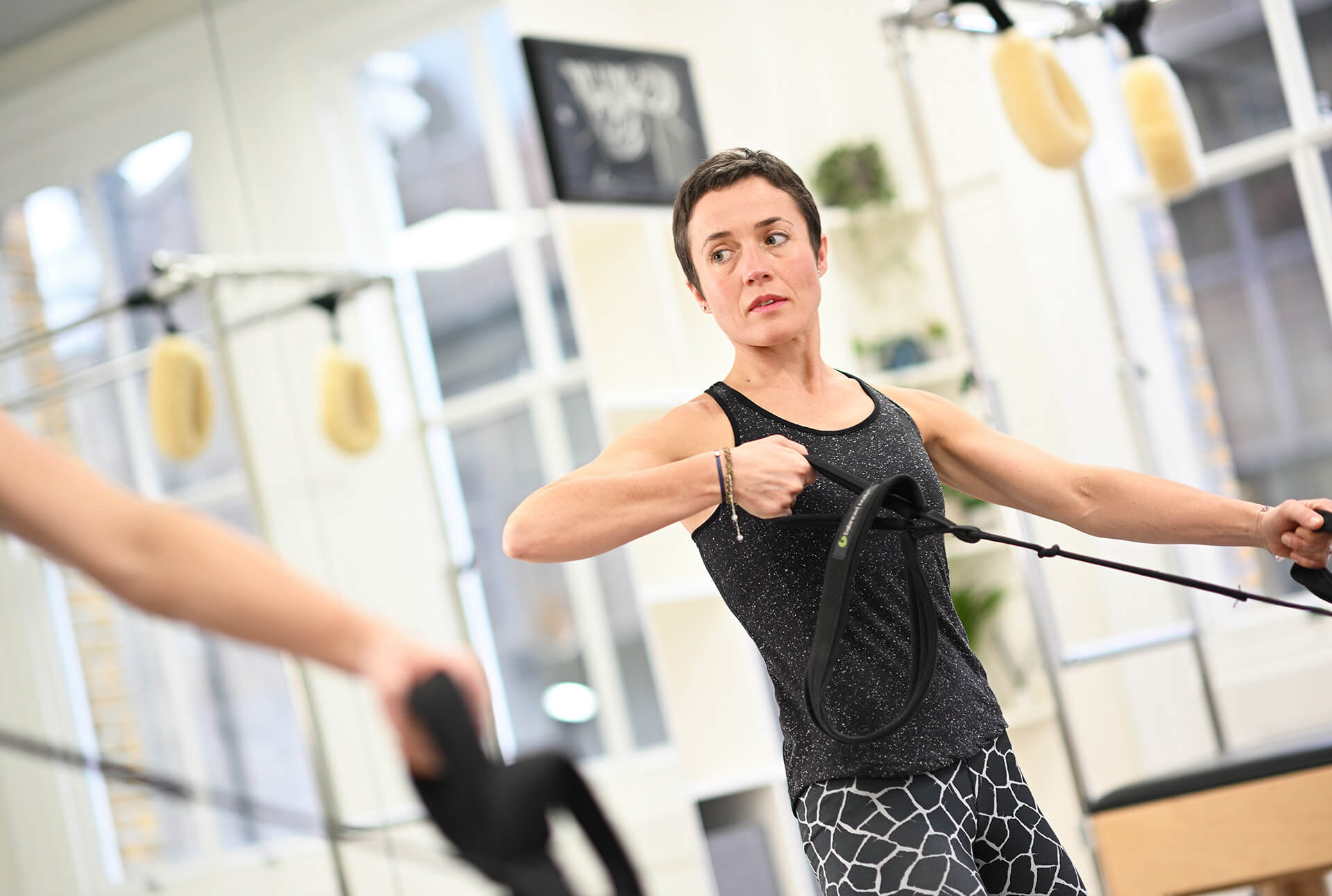Imprinting your spine is something you’ll be told to do in certain Pilates classes during abdominal exercises. It involves flattening your spine when lying flat on your back so that you leave little or no gap between your lower back and the floor. Its purpose is to prevent the lower back from overarching and so protect this vulnerable area from injury.
Why you shouldn’t imprint your spine in Pilates.
Despite the good intentions behind this instruction, imprinting your spine is actually bad for your back and alignment. Doing it repeatedly can also damage the lower back tissue and leave you with poor posture.
Another reason why you shouldn’t imprint your spine: this position will prevent you from targeting the correct abdominal muscles during Pilates classes.
The anatomical reasons you should avoid an imprinted spine in Pilates
Naturally, your spine has 3 curves: there is one in your neck, one in your mid-spine and one in your lower spine. Your spine, including your lower back, is strongest when the three curves are intact.
This means that the safest and most optimal way for you to exercise is with a curve in your lower back.
However, imprinting your spine involves flattening this curve. During Pilates abdominal exercises, this is done at the same time as loading your back by bringing your legs off the ground and then using your strength to keep them suspended there. This means you are trying to get stronger while in a weakened “slouched” posture, which is neither an effective – nor safe – way to exercise.
The imprinted spine position has other downsides in that it over-engages muscles in the hips and glutes (butt). This creates restrictions to movement at the hip and poor alignment of the pelvis.
Flattening the lower back in this way also causes you to brace through the surface muscles (like the six pack). This is instead of working your deeper abdominals – deep stabilising muscles that we want to target and which can help you get that desired flat belly.
Finding your neutral spine in Pilates
Your lower back is strongest when it is in its neutral, and most natural, position. That means neither excessively arched, nor flat against the mat.
At the same time, it is important to remember that neutral looks different for everyone. Some people, for example, may naturally have a dramatic curve in their lower back, while others might barely have a curve there at all.
For those with an exaggerated lower back curve, bringing the spine a little closer to the mat (but not flattening it to the mat) may be desirable during abdominal exercises. Those with a naturally flatter lower back will need to find ways of finding that curve using exercises like Pelvic tilts. In this instance, guidance from an expert Pilates instructor is advisable.

Ways to exercise without an imprinted spine in Pilates class
If you are struggling to keep your spine in neutral with abdominal work, reduce the challenge. Exercise like femur arcs and dead bugs, for example, are an effective way of strengthening these muscles that won’t require you to flatten your lower back.
Exercising with the support of the Pilates machines, like the trapeze table, is another great way of strengthening your abdominal muscles with a neutral spine.
Back pain during abdominal exercises
If you’re struggling with lower back pain during abdominal exercises, we suggest visiting a clinical Pilates instructor to figure out its cause. An instructor, especially in a 1-2-1 setting, will be able to assess your posture, strength and movement habits, and then give you exercises to suit your needs.
Have you been imprinting your spine during Pilates or gym work? Why not book your first one-one to find out how we can help you.
Related Reading: Do you believe these Pilates myths?
Education is key:
These blogs are designed to give information to everyone, however, it is important to remember that everyone is different! If you have not seen one of our therapists and have any questions about injuries, what you have read or whether this may be useful to you, please just ask. We are more than happy to help anyone and point you in the right direction. Our biggest belief is that education is key. The more you understand about your injury, illness and movement, the more you are likely to improve.



